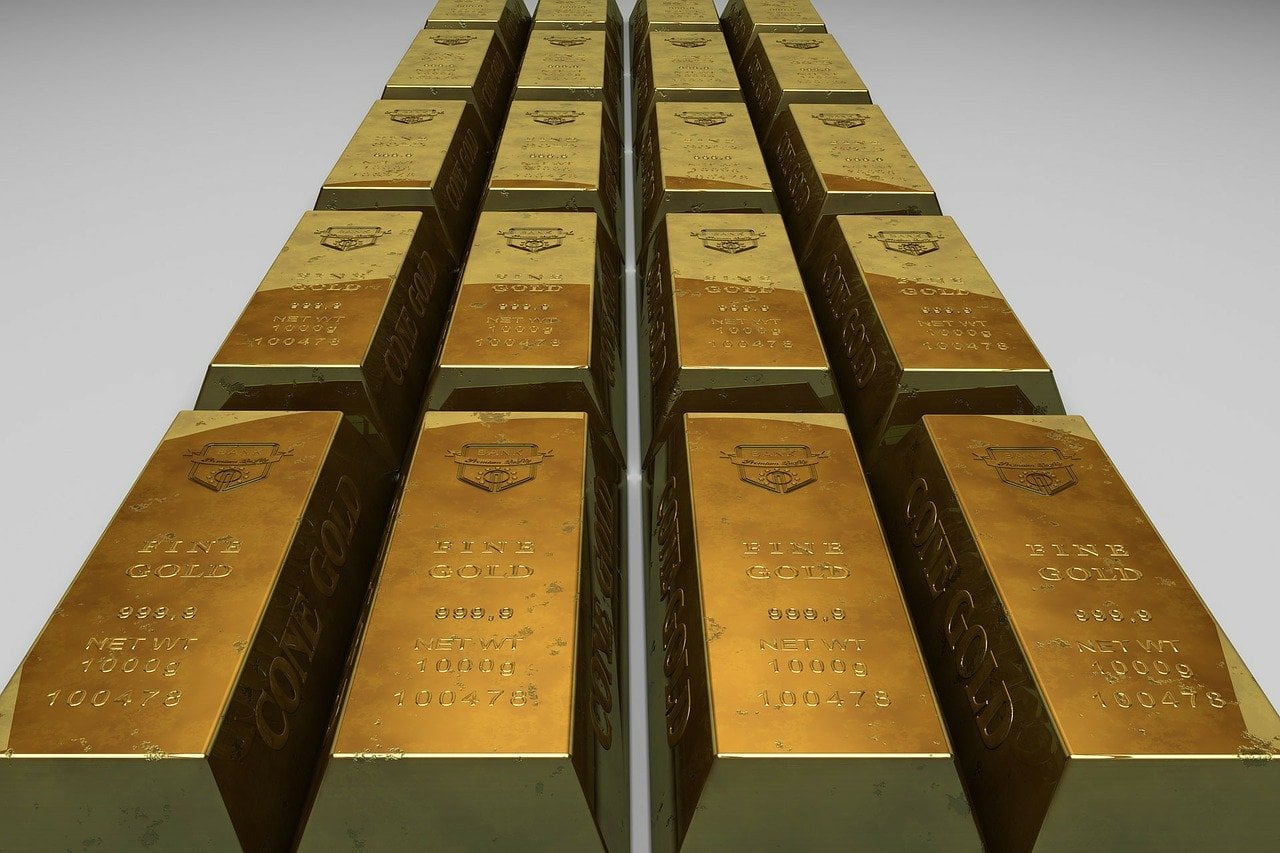As the Federal Reserve and other central banks roll out stimulus, gold prices should find support despite the short-term correction this week. Analysts say the long-term outlook for gold remains bullish despite the short-term setbacks and signs that the yellow metal is pushing toward overbought territory.
Q1 2020 hedge fund letters, conferences and more
Gold rallies above $1,700 an ounce after stimulus
Gold prices were weaker last month as investors sold the metal to make up for losses in other assets. However, gold has rallied this month, rising above $1,700 an ounce after the $2.3 trillion stimulus was announced. It doesn't look like the metal will give up that level easily.
Ole Hansen, head of commodity strategy at Saxo Bank, said in a note today that the latest round of stimulus and the "already announced yield curve control will continue to support lower real yields," which currently sit at -0.56%. He said this will especially be the case if all of the central bank's stimulus measures eventually drive higher inflation.
He noted that investors have been boosting their exposure to gold, especially through exchange-traded funds. Even though the rally paused above $1,700 an ounce, demand for gold ETFs has continued. Total holdings hit a record of 2,922 tons, an increase of 345 tons this year alone.
He said that although demand for gold remains strong, prices have been rather disappointing since the latest stimulus measure from the Federal Reserve. He explained that this demonstrates "gold's 2 step forward, 1 step back behavior," which has continued over the last year.
As long as gold prices hold above $1,700, he doesn't believe short-term tactical short sellers have reason to attack the yellow metal. However, if it fails to hold that level, he warned that gold prices could retrace toward $1,680 or even $1,640 an ounce.
He added that demand has been driven by paper demand for ETFs and gold futures, while physical demand from central banks and key markets like India and China has caused.
Bank of America sees $2,000 an ounce
Bank of America saw its target price for gold met this week when the price surpassed $1,750 an ounce temporarily, reaching the highest level in seven and a half years. The firm's analysts warned that gold is starting to show signs of being overbought, but they expect the rally to continue.
They predict the yellow metal will hit new record highs if it can surpass $1,800 an ounce. They noted that the Fed's stimulus announcement last week pushed gold futures to $1,754. That confirmed the head-and-shoulders continuation pattern, which targets $1,852 or perhaps even $1,947 an ounce.
Bank of America analysts also pointed out that after reaching $1,750, gold prices are up 15% so far this year. They also said even bigger rallies are not unprecedented. They noted that on seven occasions, gold prices have rallied 30%, while on 15 occasions, the yellow metal has rallied at least 20%.
They added that the largest rallies were between 2006 and 2011 during the late cycle rally into and out of the Great Financial Crisis. If gold prices reach $1,947, it would mean a 27% increase year to date. A 31% rally would put prices at $2,000, and a 41% rally like the one in 2006 would put the metal at $2,150 an ounce.
Bank of America analysts warned that gold prices are looking a bit crowded based on net non-commercial positioning for open interest. The danger now is that any decline that triggers a long squeeze would be sharp. They also said $1,800 could end up being a resistance level that's too difficult to beat. However, in the event of selling pressure, they see support at $1,680 to $1,700 an ounce.






